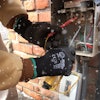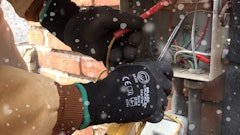As journalists in the business of writing about equipment, safety is a subject we've come to know intimately. The staff of Rental Product News has written about the safe operation of this machine or that too many times to count. After a while, the message can begin to feel stale. When the information is repeated enough times, it's easy to become deaf to it. As a writer, the concern is that we're preaching to the choir; that everybody knows this stuff.
As a rental business operator, you might feel similarly. You provide instruction and safe operating procedures to customers all day who might or might not heed the information. To those of us who are close to the situation, it's easy to assume everyone knows the safe way to operate equipment and, as a result, to get lazy about conveying the message. But it's this complacency that is the real danger.
You can visit virtually any jobsite and find numerous examples of workers cutting corners on safety. In some cases, it's a result of the operator feeling over-confident with a piece of equipment and taking risks with it. In other cases, it's ignorance. The same is true when homeowners rent your equipment. Some get comfortable with a tool and get complacent, others simply don't know what they're doing.
When your customers cut corners on safety, you need to get tougher about ensuring they leave your store with the right information. By the same token, those of us who write about equipment can't slack off either, and that's where Construction Zone Safety comes in.
Construction Zone Safety is an annual supplement to Rental Product News and several other Cygnus publications. It contains simple, easy-to-read safety instructions for a number of different types of equipment. While the information contained might seem familiar to you, it never gets old. Be sure to share the supplement with your employees and even use it as a springboard for discussion during regular safety meetings.
It's important to keep in mind that even though you know the safe way to operate your equipment, your customers might not. Some might have been given the information in the past, but need a refresher. The point is, the safety message needs to be hammered home until it's second nature for everyone who works with equipment.
Despite the feeling of knowing it inside and out, I have to admit that after years of writing about safety, I still learn many new things every time I write or edit an article about it. And when people's health and lives are at stake, there's endless inspiration to keep hammering that message home.




















